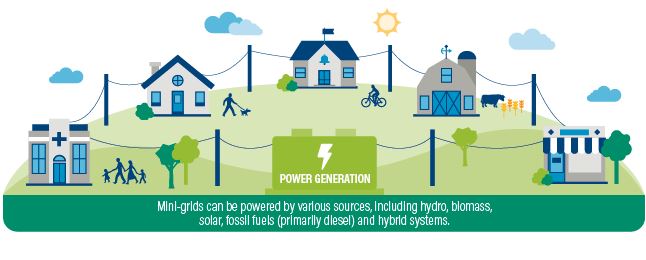Reality further sunk in last week when reports coming out from a tour of the power stations in Niger state run by Main Stream Energy Solutions Limited stated that power generation from the Jebba and Kainji power plant have been cut by 426MW. In a nation where over 50 million people are still without electricity and a sizeable chunk of consumers with access are underserved, that is a lot of power to be wasted.
There has been good effort put in by the PMB government to gradually increase generation capacity, with an optimistic figure of 7,000 MW being stated as the nation’s current generating capacity. However, the main issue is getting all available power to the populace with minimal losses. The distribution companies (DISCOs) have constantly been accused of rejecting power sent to them and, with the advent of this report, it is clear that there is much to be resolved on the distribution end of the electricity value chain.
Implementing power solutions off grid offers a viable means of providing electricity to the unreached while the issues surrounding the DISCOs get resolved. Already, major manufacturing companies are generating their own power, totally cutting off on-grid power supply, in order to maintain optimum production levels. Off grid solutions can come in different modes such as captive power generation, embedded power generation or mini-grids.
The mini-grid infrastructure, as an off-grid solution, provides the avenue of bringing power generation closer to the consumer as well as distributing the electricity generated through a custom distribution network. Mini-grids can serve as the optimum platform for implementing renewable energy solutions. Conventional fossil fuel power generation can be used in mini grids such gas fired turbines and combined heat and power plants. Already, Mini-grids has been touted as the way forward for consumers who are in rural areas out of the service area of the national grid. However, Mini-grids can also serve to power developing peri-urban areas as well as industrial clusters. By the second quarter of the year, conversations around mini-grid implementation and regulations were rife with agitation to pass into law legislature that will give legal backing to its implementation. It was eventually signed on the 24th of May, 2017.Though the current legislature favours the distribution companies (as this article elaborates), the way has been paved for investment and innovative solutions as well as budding collaboration between various players in the power industry especially among Discos and Embedded Generators (EGs) with Mini-grid solution.
Article image courtesy of World Resources Institute

